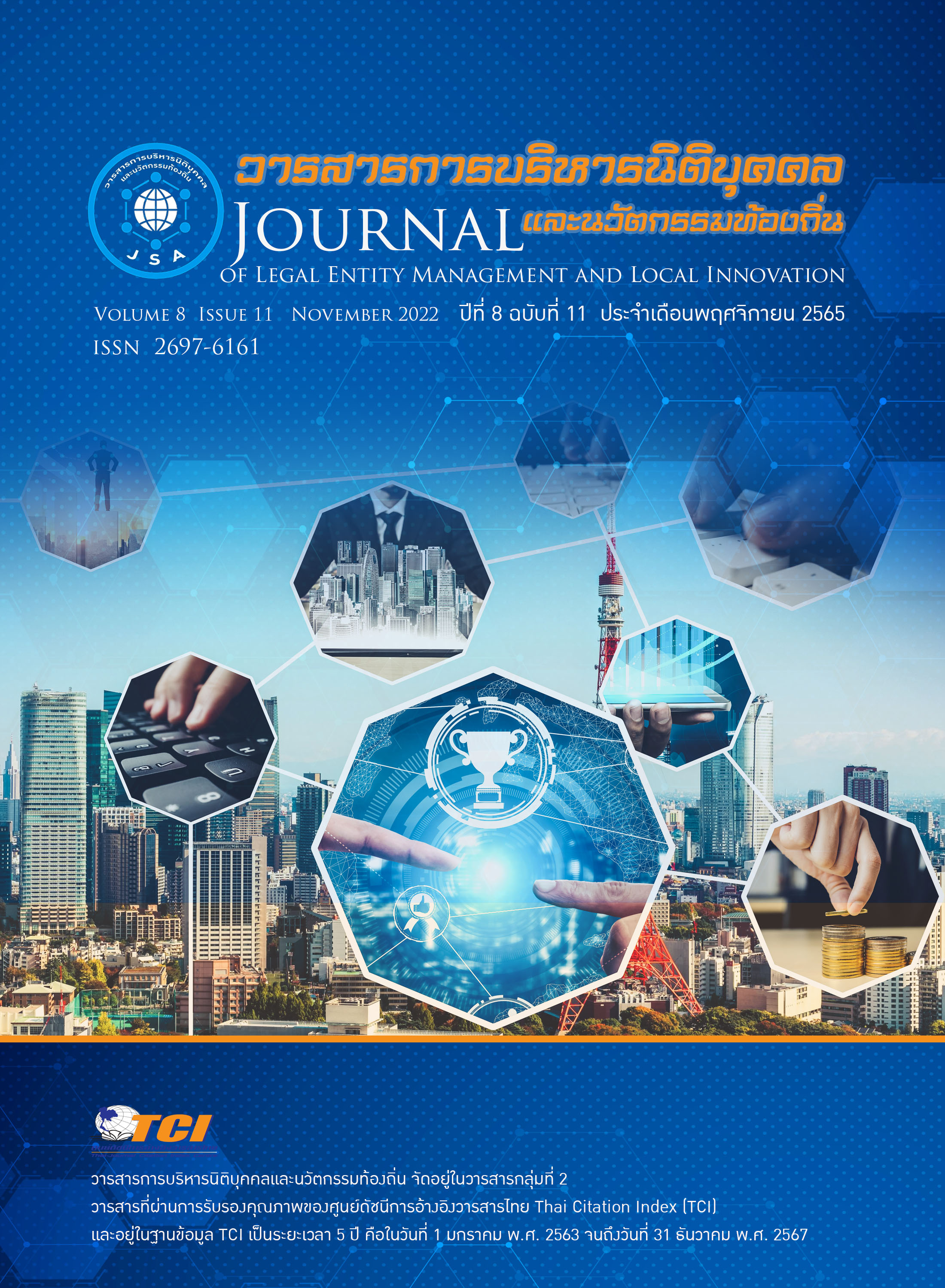ตัวแบบว่าด้วยการอยู่ร่วมกันระหว่างคนกับช้างป่าตามแนวคิดศาสตร์พระราชา : กรณีศึกษาในเขตพื้นที่อำเภอแก่งหางแมว จังหวัดจันทบุรี
คำสำคัญ:
ศาสตร์พระราชา, คนกับช้างป่า, ตัวแบบการอยู่ร่วมกันบทคัดย่อ
การวิจัยครั้งนี้มีวัตถุประสงค์เพื่อศึกษาสังเคราะห์องค์ความรู้ศาสตร์พระราชา เกี่ยวกับการอยู่ร่วมกันระหว่างคนกับช้างป่า ปัจจัยสาเหตุเชิงโครงสร้างที่ทำให้เกิดความขัดแย้งระหว่างคนกับช้างป่า และเพื่อนำเสนอตัวแบบการจัดการในการอยู่ร่วมกันระหว่างคนกับช้างป่าตามแนวคิดศาสตร์พระราชาในเขตพื้นที่อำเภอแก่งหางแมว จังหวัดจันทบุรี ใช้แนวทางการวิจัยสหวิทยาการแบบข้ามพ้นสาขา ส่วนวิธีการวิจัยเป็นการวิจัยเชิงคุณภาพแนวกรณีศึกษา วิธีการเก็บรวบรวมข้อมูลดำเนินการโดยการศึกษาเอกสาร การสัมภาษณ์เจาะลึก การสัมภาษณ์กลุ่มจากผู้ให้ข้อมูลหลักแบบเฉพาะเจาะจง และการสังเกตการณ์โดยใช้หลักการสามเส้าเป็นเครื่องมือในการตรวจสอบข้อมูล การวิเคราะห์ข้อมูลเป็นการตีความหมายในการวิจัยเชิงคุณภาพจากปรากฏการณ์ทางสังคม ผลการศึกษามีข้อค้นพบว่าองค์ความรู้ศาสตร์พระราชาเกี่ยวกับการอยู่ร่วมกันระหว่างคนกับช้างป่า สามารถนำมาประยุกต์ใช้ได้ทั้งหมด 12 ข้อ ได้แก่ การศึกษาข้อมูลอย่างเป็นระบบ การระเบิดจากข้างใน การแก้ปัญหาที่จุดเล็ก การทำตามลำดับขั้น ภูมิสังคม การทำงานแบบองค์รวม การไม่ติดตำรา การประหยัด เรียบง่าย ได้ประโยชน์สูงสุด การทำให้ง่าย การมีส่วนร่วม ประโยชน์ส่วนรวม และการใช้ธรรมชาติช่วยธรรมชาติ ส่วนปัญหาและสาเหตุเชิงโครงสร้างที่ทำให้เกิดความขัดแย้งระหว่างคนกับช้างป่าในอำเภอแก่งหางแมว จังหวัดจันทบุรี มีทั้งสิ้น 4 ปัจจัยสาเหตุหลัก ได้แก่ ปัจจัยด้านการบุกรุกทำลายป่า ปัจจัยด้านการขยายตัวของถนน ปัจจัยด้านการเพิ่มจำนวนช้างป่า ปัจจัยด้านการเปลี่ยนแปลงภูมิอากาศ ขณะที่ตัวแบบในการอยู่ร่วมกันระหว่างคนกับช้างป่าตามแนวคิดศาสตร์พระราชา สามารถแบ่งออกได้เป็น 2 ตัวแบบ กล่าวคือ ตัวแบบการแก้ไขปัญหาเฉพาะหน้า และ ตัวแบบการแก้ไขปัญหาระยะยาว


